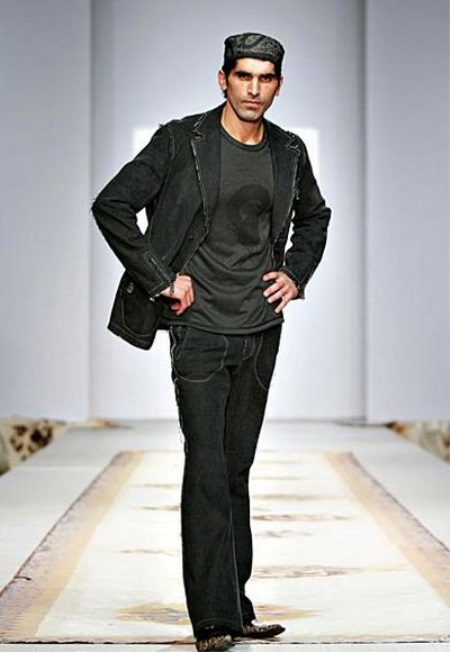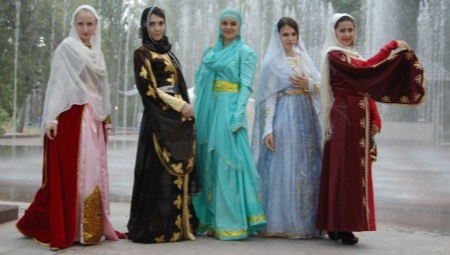Previously, it was possible to determine the age of a person, his social status, monetary accumulations, and even the village where he came from by the national costume of Dagestan. Today, these costumes are worn mainly for celebrations and theater performances. However, the younger generation knows how to appreciate the historical significance and beauty of national costumes, so costumes are usually passed on from generation to generation.
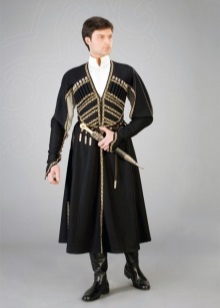
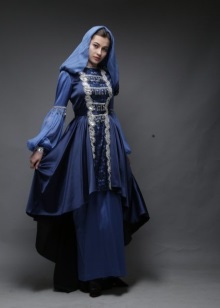
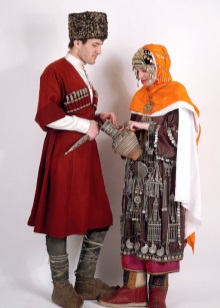
From the history of the Dagestan costume
The national costume of Dagestan, as we know it today, did not take shape right away. Its history began back in the Middle Ages. Men's suits consisted of a white shirt, dark trousers (gray or black), beshmet, boots, fur hats and fitted Circassian with ghazyry.
Circassian could be up to the knee or even lower, to the ankle, the sleeves had an extension down. She was tied with a narrow strap, on which a dagger or pistol was hung.
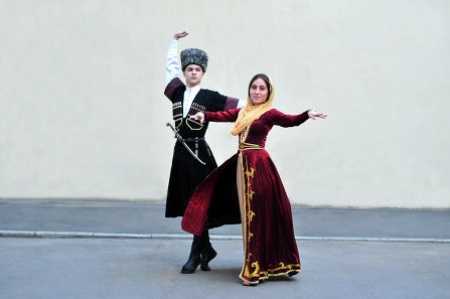
Gazyrs had caps made of ivory or silver. They kept gunpowder at a rate: one cap - one shot.
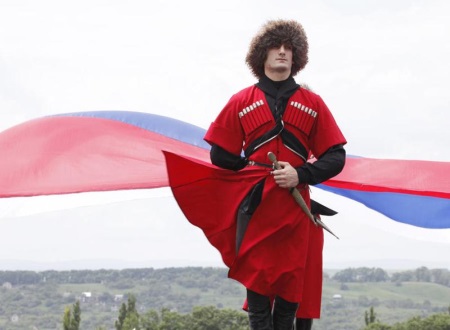
In the cold season, Dagestan men wore a sheepskin coat and ichigi or morocco boots as shoes.
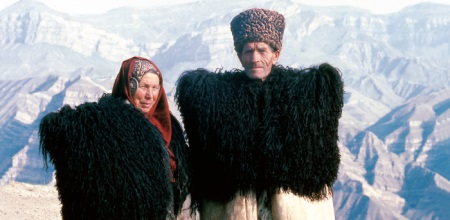
Women's suits were characterized by a relatively loose cut. Inhabitants of the plains preferred silk clothing: a shirt, pants, a dress, red morocco shoes (from goat skin), a head scarf.
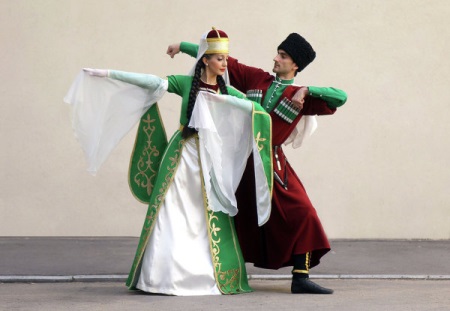
Women who lived in the mountains preferred wide long dresses and trousers with an elegant gold pattern on the sidewalls. They wore dude or boots as shoes, and the headgear in each locality was slightly different. The hair was neatly cleaned under a cap-hat, over which a coverlet was put on, and then a patterned scarf.
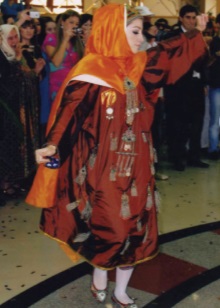
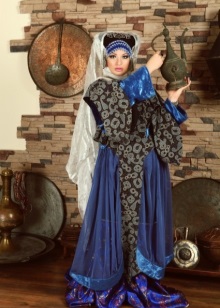
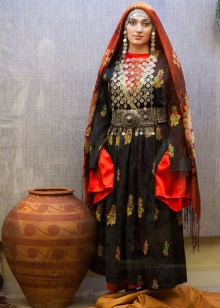
The color of the costume and the variety of jewelry indicated the social status of the owner of such an outfit, her material savings and age. Young Dagestanis preferred bright colors in clothes and ornamental fabrics, older women chose mainly clothes of dark shades.
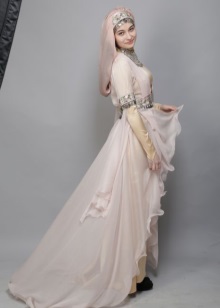
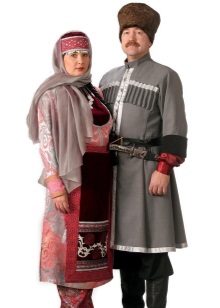
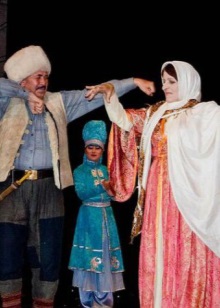
Features of the national Dagestan costume
More than seventy nationalities live in Dagestan (Avars, Tabasarans, Kumyks, Lezghins, Dargins and others), each of which has its own costume. Despite this, all the national costumes of Dagestan share some common details: the use of shirts (tunic and dress-like), tunics, chukhts, turban, shawls and beshmek.
These things were sewn from bright fabrics and decorated with patterns or embroidery (natural ornaments, animals). Patterns could carry a symbolic function - to act as a talisman, or aesthetic.
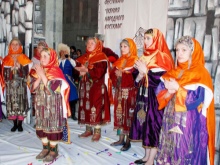

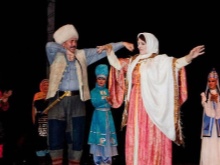
Outfits for special occasions were decorated with silver, gold and precious dresses. As additional decorations for women's suits were used: bracelets, coins, belts, rings.
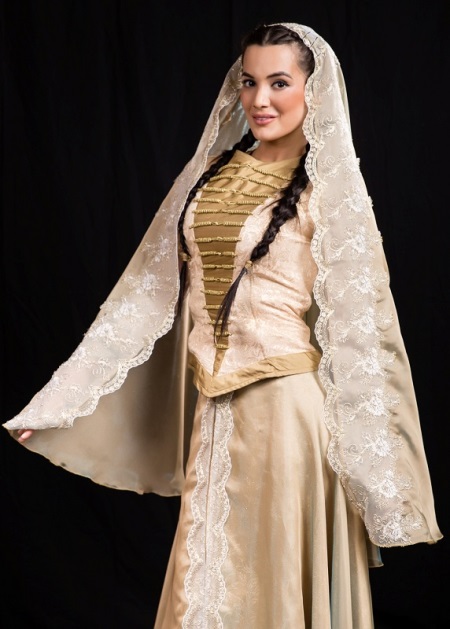
The dominant colors in the suits were: white, black, red. White color was considered a symbol of purity and was used during weddings. Red meant prosperity and prosperity in the house, the black shade had a magical connotation and symbolized an inextricable connection with the ancestors.

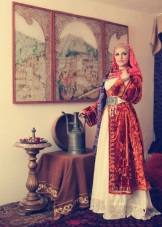
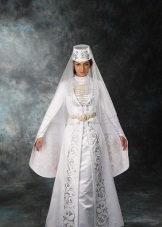
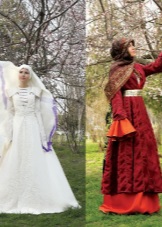
Layering is a characteristic feature of all Dagestan costumes. It was customary to put on several headscarves at once, trousers were pulled under the dress. In addition to the dress, many decorations were used, which were considered an integral part of the national image.
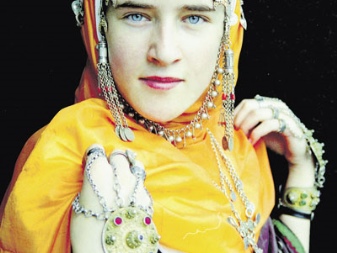
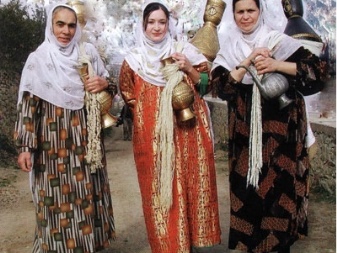
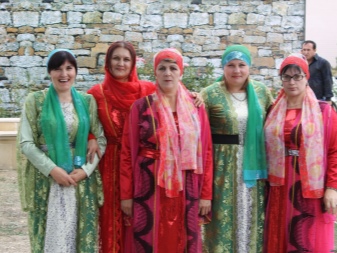
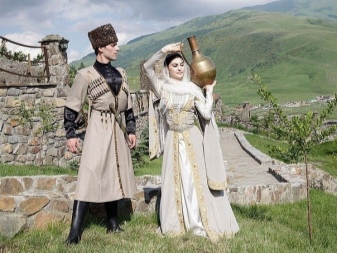
Components of the female and male outfit
In addition to all the necessary elements of clothing, the suit of Dagestan men included a hat - a headdress, which was considered a symbol of honor among the Caucasian peoples. Those who had a good income, showed off in an astrakhan hat, simple people were content with the same product, but from a sheepskin. To knock a hat off was considered an insult, and to give such a hat is a sign of friendship.
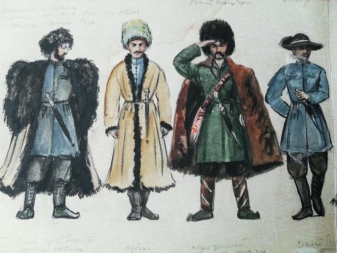
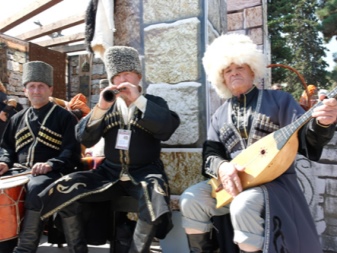
The difference between women's outfits in different parts of the country was much stronger than that of men's models. So, in the south of Dagestan they wore multilayer richly decorated costumes. First, a silk dress of a straight cut was put on, and only then a gang - the upper swing dress. The whole costume was decorated with gold, precious stones, an exquisite pattern. Favorite colors were red, purple, green. A silk scarf was tied to his head.

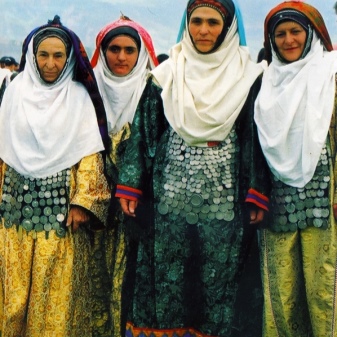
National outfits of Dagestan today
Modern Dagestan girls wear fitted dresses that emphasize a slim silhouette. Gemstones are used as jewelry, shoes - high heels. Women of Balzac age prefer loose dress-hoodies. The colors are predominantly chosen by black, as they present the figure in a favorable light.

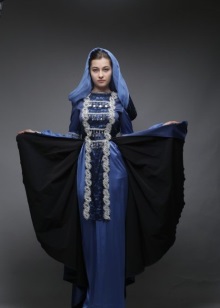
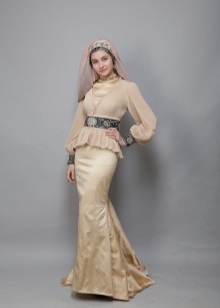
Those who work in the fields or do household chores choose comfortable bathrobes and fur vests in the cold season, thin, free-cut dresses - in warm
Dagestan men prefer to wear pants and shirts that are no different from the clothes of every modern person.
